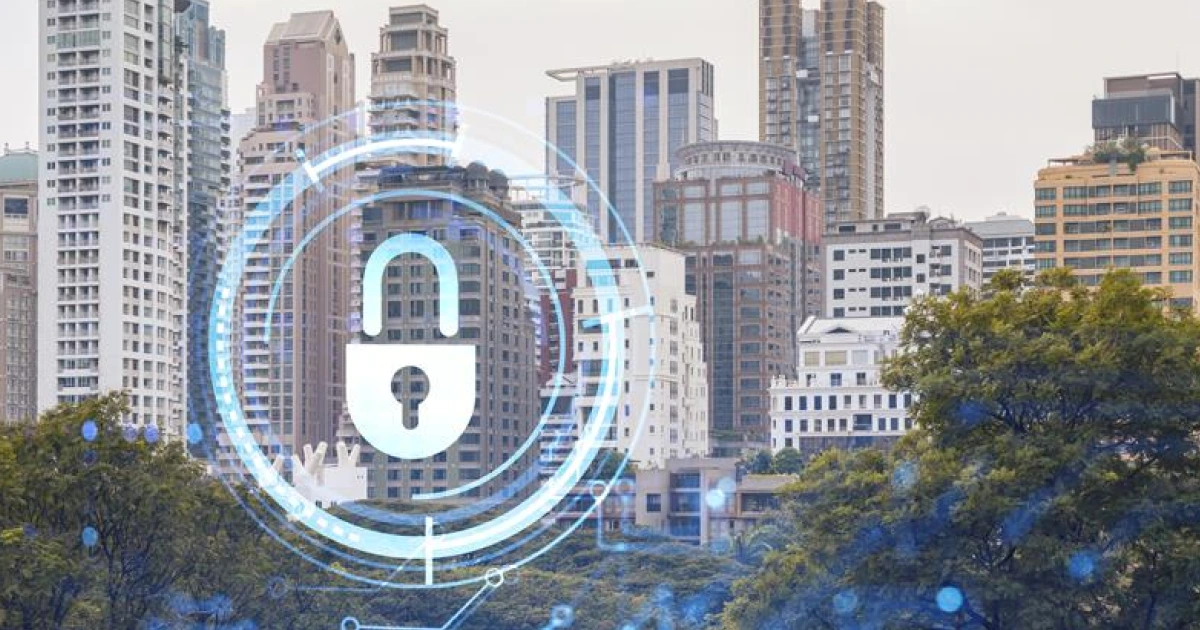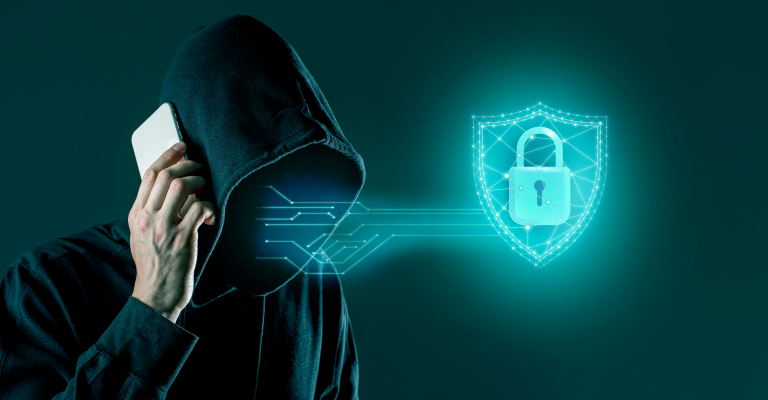With urban areas expanding rapidly, Verifiable eTDR offers a sustainable solution. Today, more than 56% of people live in cities, and this number is expected to reach 68% by 2050, according to a United Nations report. This rapid growth puts significant pressure on land use and planning, making it more important than ever to find smarter, more sustainable ways to build and manage urban spaces.
Verifiable Electronic Transferable Development Rights (eTDR) offer a practical solution. This digital solution helps cities manage land use more effectively by using blockchain technology to ensure transparency, security, and trust. With eTDR, cities can make urban planning fairer, faster, and better for everyone.
The demand for technologies like eTDR is increasing alongside the growth of smart cities. The Smart Cities Market is estimated to reach USD 1.68 trillion in 2025 and grow to USD 4.76 trillion by 2030, with a compound annual growth rate (CAGR) of 23.21% during this period.
This blog explains how Verifiable eTDR works, why it matters, and how it helps create cities that balance economic growth, environmental protection, and social fairness. Let’s explore how this technology shapes the future of urban development.
What is Verifiable eTDR?
Electronic Transferable Development Rights, or eTDR, is an innovative digital system designed to manage and transfer development rights in urban planning. Traditionally, Transferable Development Rights (TDR) allowed property owners to sell or transfer unused development rights from one location to another. This process was often cumbersome, involving a lot of paperwork and manual processes that could lead to errors and delays.
With the introduction of eTDR, this entire process has been digitized. Now, property owners can easily transfer their unused rights through a secure online platform. This advancement speeds up transactions and also reduces the chances of mistakes that can occur with paper-based systems. In essence, eTDR simplifies the management of development rights, making urban planning more efficient.
What is the Concept of Verifiability in eTDR
Verifiability is a crucial aspect of eTDR that enhances its effectiveness in urban development. By utilizing blockchain technology, eTDR ensures that all transactions are secure, transparent, and tamper-proof. Blockchain acts as a decentralized ledger where every transaction is recorded in a way that cannot be altered once it has been confirmed.
This means that all stakeholders involved property owners, developers, and city authorities can access real-time data regarding TDR transactions. The transparency provided by blockchain helps eliminate disputes over land ownership and development rights. For example, if a property owner transfers their rights, the transaction is recorded on the blockchain, ensuring that everyone can verify its authenticity without needing a central authority.
Digital Credentials in Urban Development
Digital credentials are electronic proofs that confirm the identity and rights of individuals in urban development projects. By using verifiable credential technology, these digital proofs ensure that only authorized participants engage in eTDR (Electronic Transferable Development Rights) transactions.
For example, when city authorities issue a TDR certificate to a property owner, it’s digitally signed and stored securely, preventing forgery or tampering. This system streamlines urban planning processes, leading to faster approvals and transactions while maintaining high security and trust among all parties involved. As cities expand and face land use and sustainability challenges, integrating verifiable credentials into eTDR systems becomes increasingly important.
What are Benefits of Verifiable eTDR
Verifiable Electronic Transferable Development Rights (eTDR) offer several significant benefits that can enhance urban planning and development. These benefits can be categorized into environmental, economic, and social equity aspects.
Environmental Benefits
One of the most notable advantages of verifiable eTDR is its positive impact on the environment. By facilitating the transfer of development rights, eTDR helps to:
- Reduce Urban Sprawl: eTDR encourages concentrated development in designated areas, minimizing the spread of urbanization into natural habitats and green spaces.
- Protect Green Spaces: By allowing property owners to sell their unused development rights, eTDR promotes the preservation of parks and natural areas, ensuring they remain untouched by development.
- Cut Greenhouse Gas Emissions: Implementing eTDR can lead to a reduction in greenhouse gas emissions by up to 30%. This is achieved through more efficient land use and reduced reliance on cars, as denser developments often mean shorter commutes and better public transport options.
Economic Benefits
Verifiable eTDR also brings substantial economic advantages:
- Optimizing Land Use: By enabling the transfer of development rights, eTDR helps ensure that land is used more efficiently. This leads to better planning and utilization of available resources.
- Supporting Infrastructure Development: As development becomes more concentrated, it can lead to improved infrastructure such as roads, schools, and public services. This not only enhances the quality of life for residents but also attracts businesses.
- Boosting Economic Growth: With optimized land use and improved infrastructure, local economies can thrive. Businesses are more likely to invest in areas with well-planned developments, leading to job creation and increased economic activity.
Social Equity
Finally, verifiable eTDR promotes social equity by ensuring fair access to land resources:
- Ensuring Fair Access: eTDR systems can help level the playing field by providing opportunities for marginalized communities to access land resources and participate in urban development.
- Development Opportunities: By enabling a transparent system for transferring development rights, eTDR ensures that all stakeholders have an equal opportunity to benefit from urban growth and revitalization efforts.
Policy Framework for eTDR
A robust policy framework for Electronic Transferable Development Rights (eTDR) is essential for effective urban planning. Such a framework ensures that the transfer of development rights is conducted transparently and efficiently, which is crucial for sustainable urban growth. It establishes clear regulations that guide how development rights can be transferred, helping to prevent disputes and mismanagement.
Key considerations for implementing an effective eTDR policy include engaging stakeholders from various sectors, such as local governments, property owners, developers, and community members. This engagement fosters collaboration and ensures that the needs and concerns of all parties are addressed. Additionally, public-private partnerships can enhance the implementation process by combining resources and expertise from both sectors, leading to more innovative solutions.
The Urban Sustainability Framework by the World Bank serves as a valuable reference in this context. It emphasizes the importance of integrated planning and governance in achieving sustainable urban development. The framework outlines a four-stage approach: diagnosing current conditions, creating a vision for the future, determining priorities for action, and monitoring progress. By aligning eTDR policies with this framework, cities can ensure they are not only managing development rights effectively but also contributing to broader sustainability goals that benefit the environment and society as a whole.
Challenges and Solutions in eTDR Adoption
Adopting Electronic Transferable Development Rights (eTDR) can be challenging due to several reasons. Many people face technological barriers, as not everyone has access to or is familiar with the digital credential platform like EveryCRED. There is also a lack of awareness about eTDR benefits, leading to resistance from property owners and local governments who are used to traditional methods.
To address these issues, educating the public is essential. By raising awareness about how eTDR simplifies urban development, more stakeholders can be encouraged to participate. Government support is equally important. Policymakers can ease the transition by offering incentives, resources, and simplified processes to make adoption smoother and less intimidating.
Blockchain technology can further help by providing a secure and transparent system for eTDR transactions. It prevents fraud, ensures data accuracy, and builds trust among users. This makes eTDR safer and also more efficient making it a practical choice for modern urban planning.
eTDR and Its Role in Sustainable Urban Development
Electronic Transferable Development Rights (eTDR) are a smart way to support sustainable urban development. Using it, property owners transfer unused development rights from areas that need protection, like green spaces or eco-sensitive zones, to areas suitable for growth. This approach helps cities grow without harming the environment or losing valuable natural spaces.
eTDR also supports better land management by focusing development in specific areas. This reduces pressure on open land, protects ecosystems, and promotes compact urban designs. According to the World Bank, adopting better land use policies, supported by platform like eTDR, could also reduce greenhouse gas emissions by up to 30%, helping cities become greener and more sustainable. By encouraging denser cities, it helps lower greenhouse gas emissions and makes public transport more practical, reducing car dependence.
Beyond environmental benefits, eTDR boosts economic growth and ensures fairness. It allows cities to grow in a way that benefits everyone by improving infrastructure and providing equal opportunities for development. This makes urban areas more inclusive, vibrant, and balanced, ensuring they meet both present and future needs responsibly.
Future of Verifiable eTDR in Urban Planning
The future of Electronic Transferable Development Rights (eTDR) looks promising, especially with the increasing focus on smart cities. As urban areas continue to grow, the adoption of eTDR is expected to rise significantly, allowing cities to manage development more effectively while preserving essential green spaces. This shift will simplify urban planning processes and also enhance the smart cities market by integrating technology into land management systems.
Advancements in blockchain technology and digital credentials will further support the evolution of eTDR. Blockchain can provide a secure and transparent way to track the transfer of development rights, reducing fraud and inefficiencies in the system. As cities adopt these technologies, we can expect more efficient processes that allow for real-time updates and verifications of development rights, making urban planning more responsive to community needs.
In the long run, eTDR can create cities where economic growth, environmental care, and social fairness work together. By using land wisely and ensuring equal access to opportunities, eTDR supports urban areas that are both thriving and sustainable, ready to tackle future challenges while prioritizing people and the planet.
Check this: How to Choose Ideal Digital Credential Solutions?
Conclusion
Verifiable Electronic Transferable Development Rights (eTDR) offer a powerful solution to urban challenges by promoting sustainable land use, preserving green spaces, and involving communities in urban planning. eTDR allows for the safe and efficient transfer of development rights, helping cities balance growth with environmental protection, and leading to more resilient and fair urban areas.
As cities grow, policymakers and urban planners need to adopt eTDR as a key digital solution for sustainable development. Integrating this approach into planning can help communities use land wisely without sacrificing social fairness or environmental health.
At EveryCRED, we’re dedicated to supporting this shift by providing secure, verifiable credentials for urban development. Our platform helps stakeholders manage development rights transparently, building trust and collaboration in communities. We encourage decision-makers to reach out and explore how EveryCRED can improve your urban planning efforts and promote sustainable growth in your city. Together, we can create urban spaces that work well with nature and society.
For more details or to schedule a consultation, visit the EveryCRED.

 21st January, 2025
21st January, 2025 



